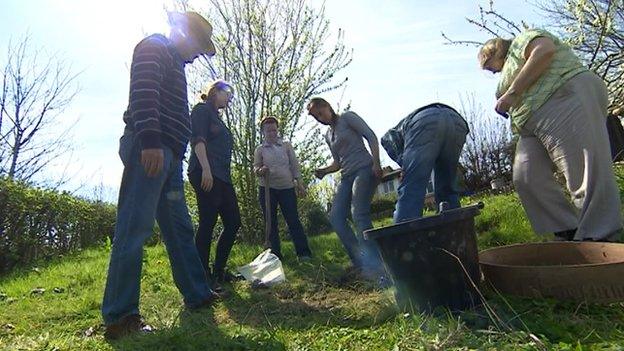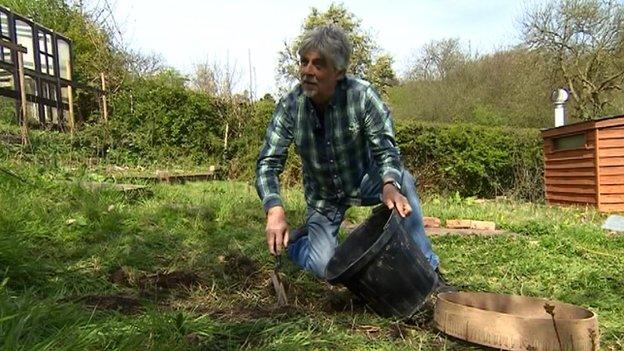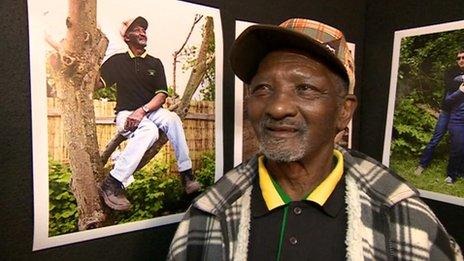St Anns Allotments: Year-long dig planned at historic gardens
- Published

The project will involve allotment holders, local historians and some trained archaeologists
An archaeological dig has started at historic allotments that dates back more than 700 years.
The year-long project at St Anns allotments in Nottingham will involve gardeners and archaeologists.
The Grade II listed allotments are believed to be the oldest and largest detached town gardens in the UK and possibly in the world.
The participants hope to unearth pottery, metal and coins during the dig.
Medieval finds
The Dig for History project, which is receiving £17,000 from the Heritage Lottery Fund, will include archaeologists from Trent and Peak Archaeology.
Mo Cooper, heritage officer for the St Anns Allotments, said gardeners had been digging at the allotments for more than seven centuries.
"We have found clay pipes, and a china doll and… lots of bottles and bricks," she said.
She said the volunteers also found "a bit of glazed pottery that dates from the 1700s - which is still covered in dirt" on the first day.
"We are asking people to take small samples of soil from their plots and we will sift through it and hopefully we will find get examples of medieval finds."

Colin is a volunteer from nearby Carlton who got involved because he is interested in archaeology

A small piece of pottery with a glazed edge was found on the first day which probably dates back to the 1700s

The allotments are located on the edge of the city of Nottingham and contain many summer houses

The researchers hope most of the allotment holders will take at least a small sample from their plots and sift it for artefacts

Victorian allotments
There are 670 individual gardens on three connected sites - Hungerhill Gardens, Stonepit Coppice Gardens and Gorsey Close Gardens
The allotments are a wildlife haven in the centre of the city for many plants, insects, birds and animals
The plots are enclosed by 32 miles of hedgerow on a 75-acre site.
Research shows as many as 200 people lived on their plots right through to the 1930s

- Published18 May 2014

- Published15 May 2014
